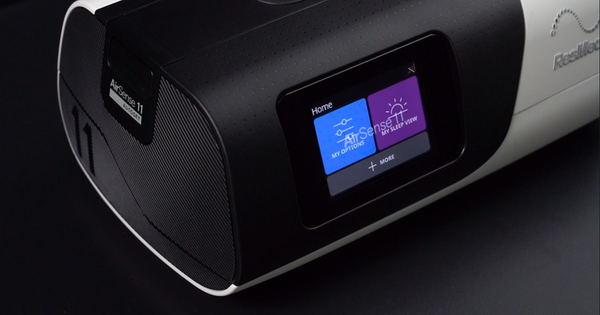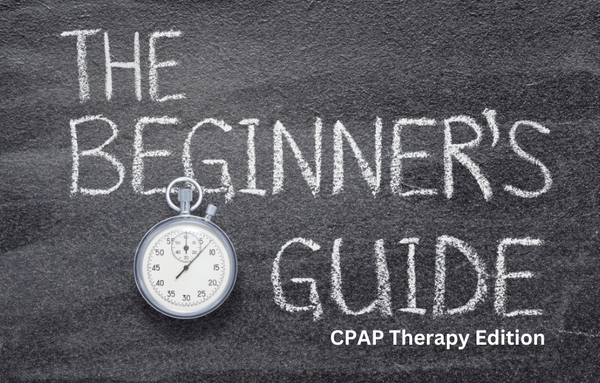Sleep Apnea In Children: What Signs Should You Look Out For
juin 08, 2020

Sleep Apnea is not just a disorder that affects adults. Children have also been known to show signs of this sleep disorder, although it doesn’t always manifest in the same way as it does in adults. If you have noticed that your child breathes heavily or snores while asleep, these may be some signs that indicate they are suffering from Sleep Apnea.
Below, we discuss what Sleep Apnea in children looks like and what signs you should be taking notice of as a parent.
Can Children Develop Obstructive Sleep Apnea?
Generally, when someone thinks of this sleep disorder they don’t often associate it with children. And if you are one of these people, you certainly aren’t alone. There are thousands of articles out there discussing how Obstructive Sleep Apnea (OSA) affects adults but not many discuss the impacts it can have on a child.
In fact, you may be surprised to learn that many children are grossly underdiagnosed when it comes to sleep-disordered breathing. According to research studies, OSA affects 1 in 5 Canadian children each year but many children are still not getting diagnosed early enough. If left untreated, Sleep Apnea in children has the ability to cause lasting health and behavioural consequences.
Similar to adults, OSA in children is caused by the regular disruption of breathing during sleep due to a partially or completely blocked airway passage. This blockage can be caused by larger than normal tonsils, enlarged adenoids, weak neck muscles and other underlying health conditions.
Top Sleep Apnea Signs That Children Display
So, now that you know that OSA isn’ strictly a disorder that is found in adults, what are the telltale signs of it in children? As a parent, we are sure that you have spent many occasions watching your little one as they’ve been tucked in and sleeping in bed.
So, the next time that you pop your head in their bedroom door late at night, make sure to look out for the following Sleep Apnea signs in children:
Teeth-Grinding
While you might think that your child grinding their teeth in the middle of the night is just a nasty habit, it could actually be a sign of OSA. As this sleep disorder occurs when the soft tissues of the throat block the airway, teeth grinding may be a way that the body subconsciously keeps the airway open.
Bed Wetting
Although it is normal for every child to wet the bed at night while they are learning to potty train. If this occurs more than twice a week after the age of five, it could be a sign of a more serious problem. While we aren’t saying Sleep Apnea will be the sole cause for this it could potentially be one telltale sign.
Sweating
Sweating during sleep is never normal for children unless due to a fever. If your child wakes up regularly with damp pyjamas, this could be explained by the fact that OSA causes spikes in blood pressure and heart rate and increases in stress hormones.
Restless Sleep & Unusual Sleeping Positions
All children can have restless sleep at certain stages of their development. However, if you notice that your child moves excessively in their sleep or that their covers end up twisted in a ball at the end of their bed in the morning, this could be a sign of distressed breathing during sleep.
Sleep Apnea in children can also show itself through unusual sleeping positions. Oftentimes when children are struggling to breathe properly in their sleep, they switch sleep positions in an attempt to find a way to sleep and breathe more comfortably. It is not unusual to find children with untreated OSA sleeping upside down or propped up in odd ways.
Snoring
Occasional snoring for a child should not be a cause of concern. But if your child is snoring on a nightly basis, it may be a sign that there’s a problem. Chronic snoring is a sign of abnormal flow of air through the upper airway. Snoring and Sleep Apnea often goes hand-in-hand, so if you notice consistent snoring in your child then it’s essential to look out for other OSA symptoms.
Keeping a journal and taking notes of how your child sleeps can be extremely beneficial in determining whether they are struggling or not. Remember, that not all children will display the same signs. While they may not snore, there could be other symptoms that they have such as day-time fatigue or behavioural issues.
How Does This Sleep Disorder Affect Children In The Long Run?
If left untreated, this sleep disorder has been known to cause learning difficulties, poor concentration, hyperactivity and weight gain for children. The good news is that those who receive timely and accurate treatment, can function in healthy ways and often don’t have issues with Sleep Apnea in adulthood.
The first step to getting help for your child is bringing them for a sleep assessment in order to pinpoint the underlying cause. Once this has been determined, a sleep specialist can prescribe the best course of action. In some cases, this may be CPAP therapy which has proven successful in treating OSA symptoms in children.
Interested in learning more about this sleep disorder? If you suspect that your child is suffering from Sleep Apnea or another sleep disorder, please consult with your doctor who will be happy to answer all of your questions.
Partager:
Laisser un commentaire
Les commentaires sont approuvés avant leur publication.



